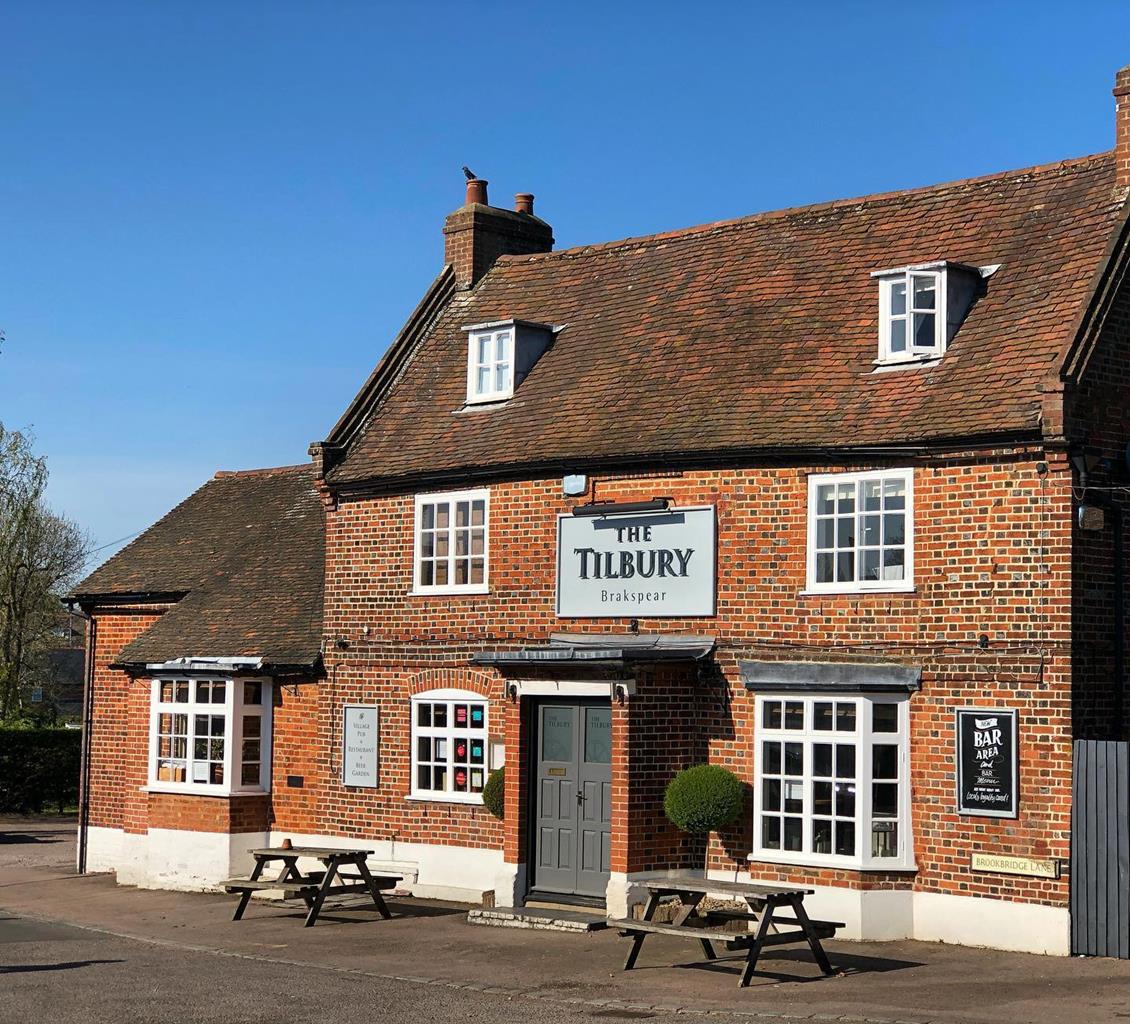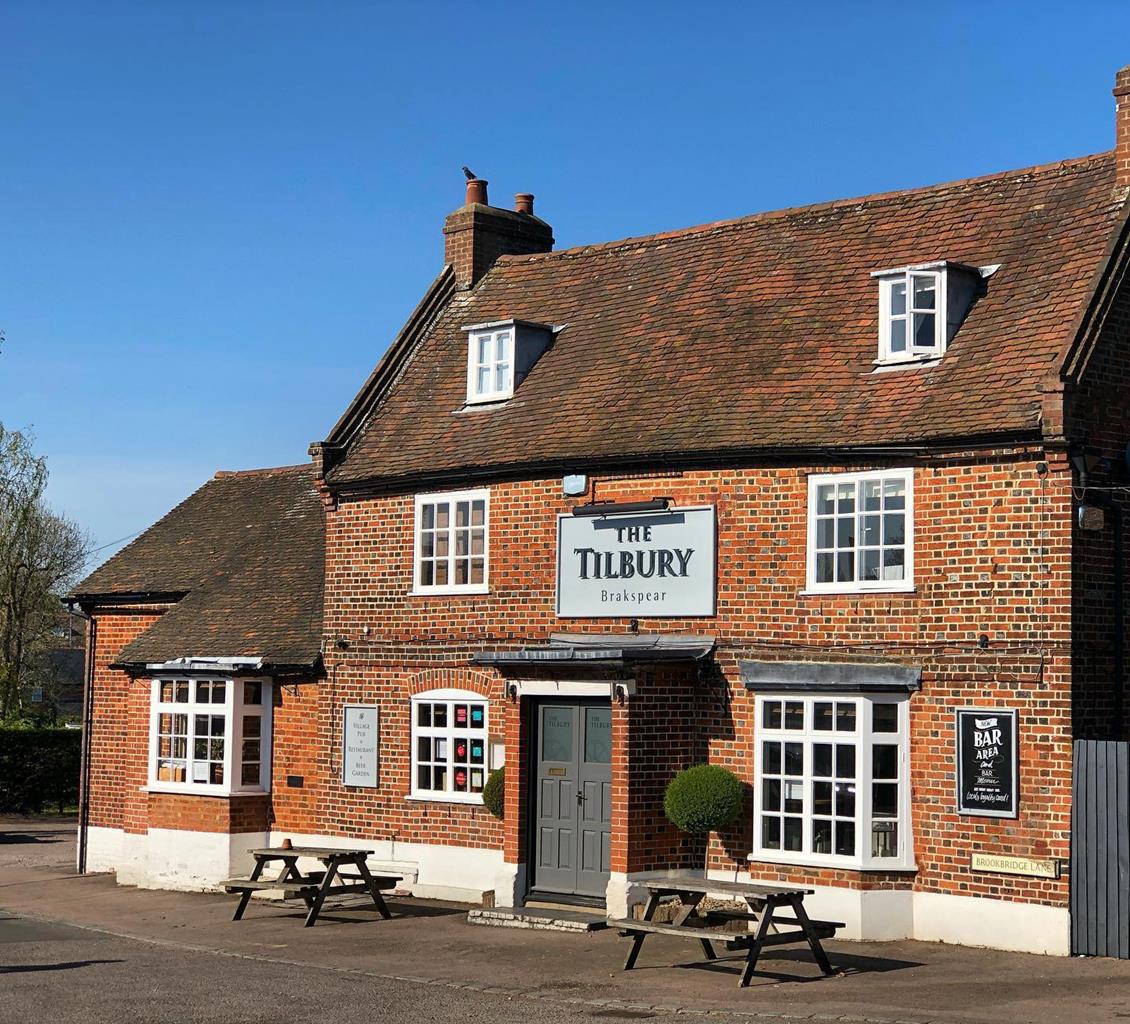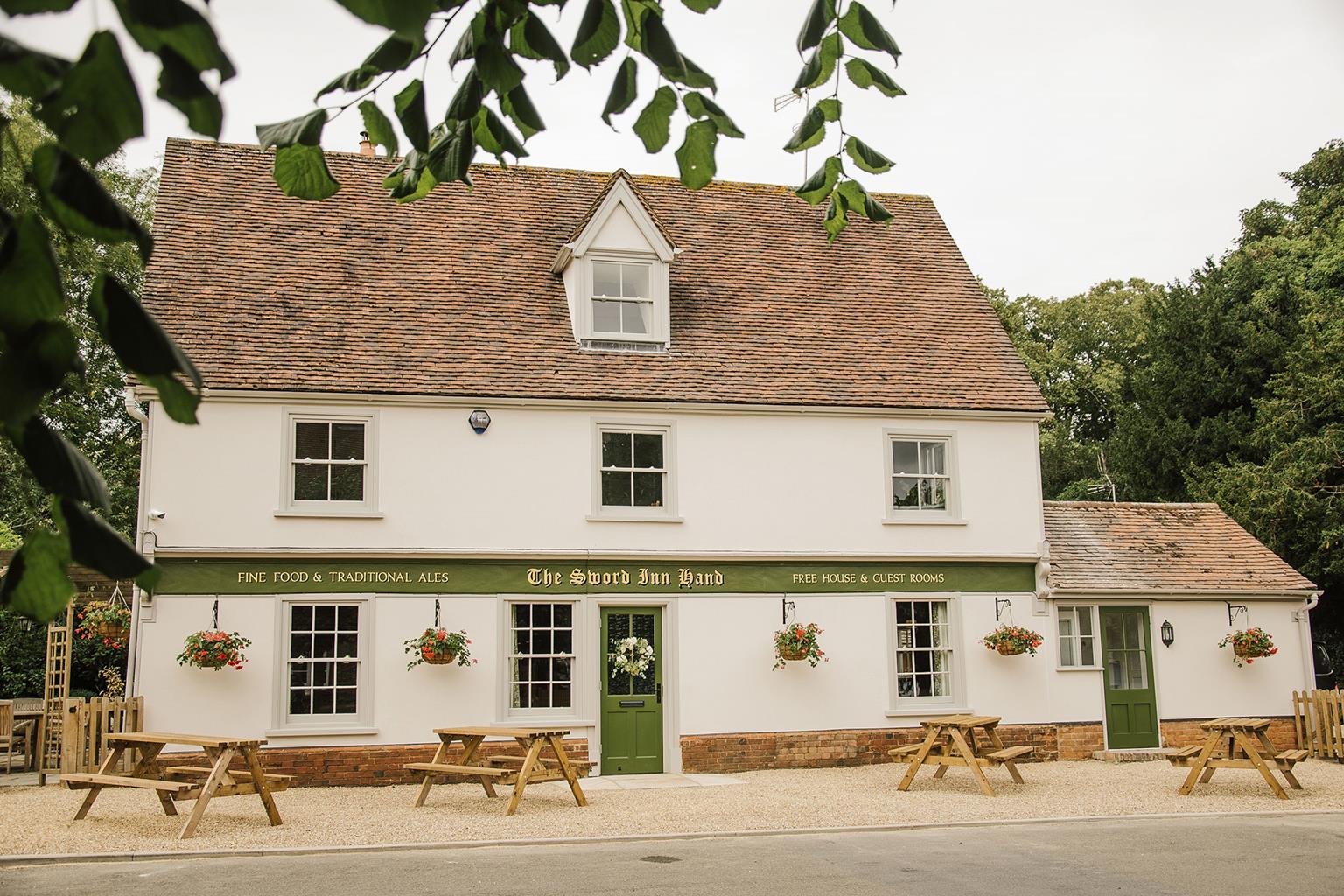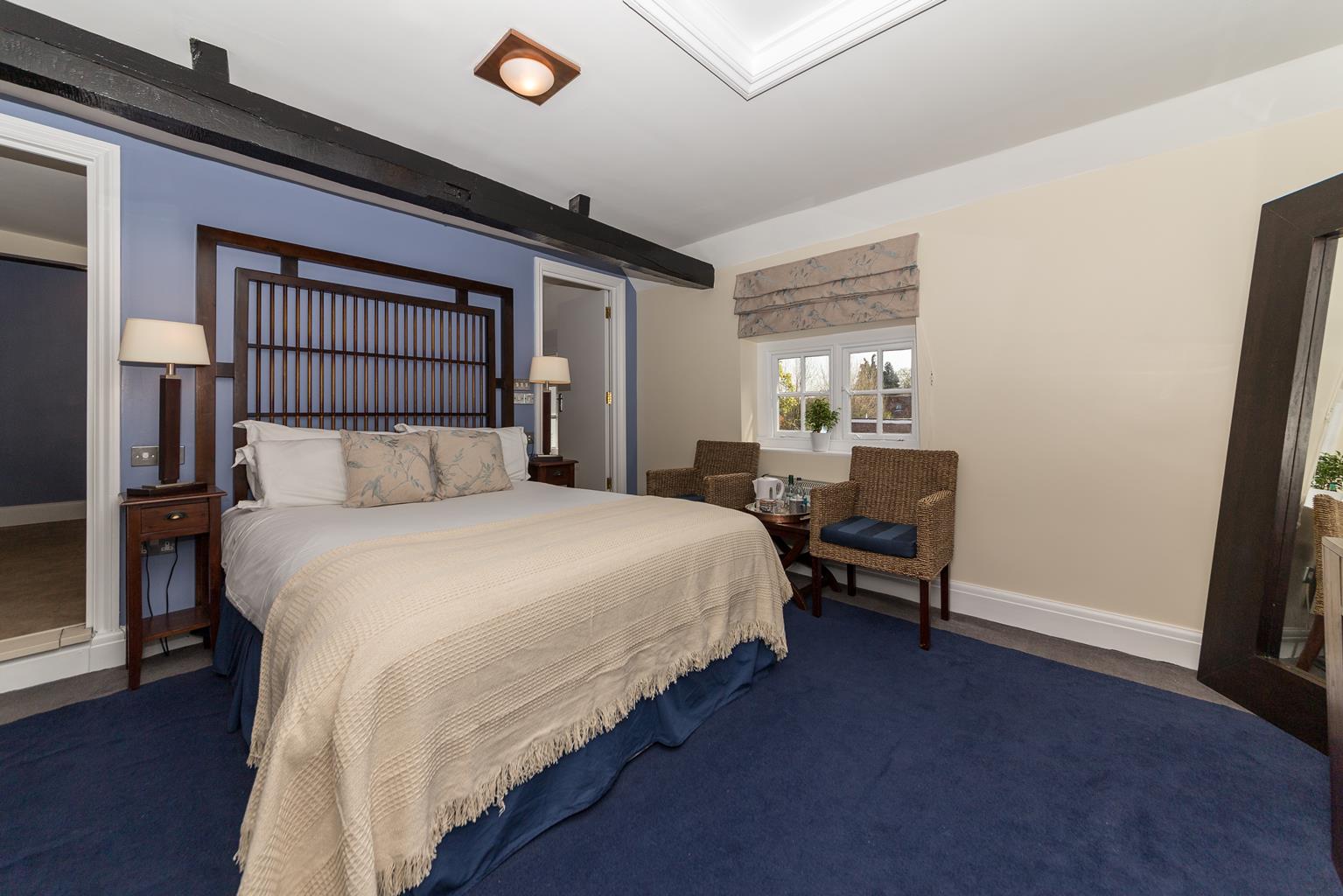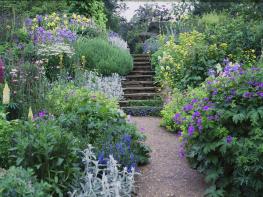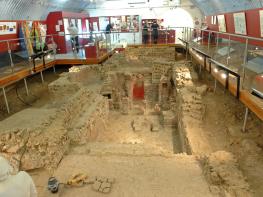Discover three beautiful holiday cottages at High Trees Farm, a 600-year-old working farm set in…
Thundridge to High Cross and the Rib Valley

4 miles (6.4kms)
About the walk
Although Thundridge and Wadesmill are on Roman Ermine Street, they were not always so. Thundridge, like many early Anglo-Saxon settlements, grew up off the road, about 0.5 miles (800m) to the east along the valley of the River Rib. Of this original village only the 15th-century tower of the old church survives. There is a reset Norman doorway in its tower arch, together with the remains of a moat and a fragment of the old manor house, Thundridge Bury. This peculiar fragment is the Tudor chimneystack with three fireplaces one above the other. The rest of the house was demolished in 1811.
Pagan god
The name 'Thundridge' refers to Thunor, a pagan Anglo-Saxon god, and dates the first settlement to before about ad 600, that is, before the East Saxons were converted to Christianity. The new St Mary's Church was built in 1853 and is dominant on the crest of the ridge by Ermine Street. It's a stiff climb up from the River Rib bridge, which was designed by Caleb Hatch in 1825 but has modern balustrades.
War hero
In Marshalls Lane, High Cross, you'll see Marshalls, a Victorian brick house on the left. This was once the home of Colonel Arthur Martin-Leake. He was an army surgeon, who held the distinction of having been awarded the Victoria Cross twice (known as 'VC and Bar'). Born in 1874, his first act of meritorious bravery was at Vlakfontein, South Africa in 1902, during the Boer War. Despite being under heavy fire from Boer positions, he continued to dress men's wounds, even after he had been shot himself. His second Victoria Cross came in Belgium in 1914, during World War I. Again Martin-Leake managed to tend to injured men despite constant enemy fire from nearby trenches. He was the first to receive the medal twice and remains one of only three to have been recognised in this way. In World War II he took command of a local Air Raid Precautions unit. He died in 1953 and is buried at St John the Evangelist Church, High Cross.
Wadesmill is the site of the first road toll house in England. The income it generated was to be used to repair and keep open the roads. The local malting industry was mainly responsible for damage, since their laden wagons churned up the local highways. A little up the hill is an obelisk erected in 1879 in memory of Thomas Clarkson, a Quaker from Wisbech, who in 1785 'resolved to devote his life to bringing about the abolition of the slave trade'. It was placed here by Arthur Giles Pullar of Youngsbury.
Walk directions
From Thundridge Village Stores walk uphill and at the bend in Ermine Street there are two footpath signs: follow the 'Ware' one steeply uphill to the Victorian parish churchyard, for good views northwards and westwards. Retrace your steps downhill to Ermine Street and follow the other footpath, signposted 'Thundridge Old Church'. After a kissing gate go straight on across pasture, now on the Hertfordshire Way, then cross some arable land to descend to the Rib Valley. Turn right on to a tarmac path. Pass under the A10 Wadesmill bypass, heading for Cold Christmas. Once under the road, turn left on to a path. The ruined church tower is visible ahead and to the left, beyond the river, are the grounds of Youngsbury, a country house from 1745 set in 'Capability' Brown parkland.
Only the tower of the medieval parish church remains, the rest having been pulled down in 1853. Continue along the metalled track, between pastures. Pass a tree-lined track on the right and continue straight ahead on the footpath. Cross an access road. At a footpath crossroads go left over a footbridge that bypasses the River Rib ford.
Now climb out of the valley with arable fields to your right and Youngsbury's Picturesque parkland to your left. At the brow the track skirts woodland, in fact an arboretum. Carry straight on, ignoring the track bearing right. Go straight on, past some farm buildings. The track, now metalled, curves left and downhill.
On reaching some white-painted, iron gates, ignore a path on the right and continue along the metalled road to recross the old A10 before arriving in High Cross. Turn right at the village street to visit St John the Evangelist Church.
From the churchyard turn left down Ermine Street and continue on. Near The White Horse pub turn right into Marshall's Lane. Pass some modern houses, then Marshall's Farm and Marshall's (both Victorian), to descend into the valley by a winding holloway lane.
Cross The Bourne and go left by the footpath signposted 'Wadesmill' (the footpath is to the left, not the field track on the right). The path keeps alongside The Bourne almost into Wadesmill, where it crosses to the other bank on a footbridge. It becomes a gravelled access lane to the main road.
Turn right over the River Rib bridge. Turn left at the Thundridge Village Stores, back into Ermine Street, Thundridge.
Additional information
Good paths and tracks with only one large arable field to cross, no stiles
Valleys and chalk hills, a mix of arable land and pasture
Sheep pasture and horse paddocks along the Rib Valley
OS Explorer 194 Hertford & Bishop’s Stortford
By the village stores, Ermine Street, Thundridge (to east of A10)
None on route
WALKING IN SAFETY
Read our tips to look after yourself and the environment when following this walk.
Find out more
Also in the area
About the area
Discover Hertfordshire
As Hertfordshire is so close to London, many of its towns have become commuter havens. St Albans, less than 19 miles (30km) from the capital, has retained its distinctive character, along with many historic remains. The Roman city of Verulamium is situated in a nearby park, and excavations have revealed an amphitheatre, a temple, parts of the city walls and some house foundations. There are also some amazing mosaic pavements.
The abbey church at St Albans is thought to have been built on the same site where St Alban met his martyrdom in the 3rd century. The abbey was founded in 793 by King Offa of Mercia, and contains the saint’s shrine, made of Purbeck marble. Lost for years, it was discovered in the 19th century, in pieces, and restored by the designer of the red telephone box, Sir Giles Gilbert Scott. The abbey also contains some wonderful medieval wall paintings. Nicholas Breakspear was born in St Albans, the son of an abbey tenant. In 1154 he took the name Adrian IV, and became the first, and so far only, English pope. Another famous son of Hertfordshire was Sir Francis Bacon, Elizabethan scholar and Lord High Chancellor, born in Hemel Hempstead in 1561.
Nearby stays
Restaurants and Pubs
Nearby experiences
Recommended things to do
Why choose Rated Trips?
Your trusted guide to rated places across the UK
The best coverage
Discover more than 15,000 professionally rated places to stay, eat and visit from across the UK and Ireland.
Quality assured
Choose a place to stay safe in the knowledge that it has been expertly assessed by trained assessors.
Plan your next trip
Search by location or the type of place you're visiting to find your next ideal holiday experience.
Travel inspiration
Read our articles, city guides and recommended things to do for inspiration. We're here to help you explore the UK.

